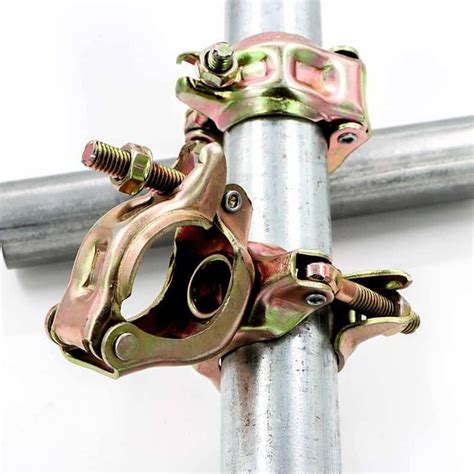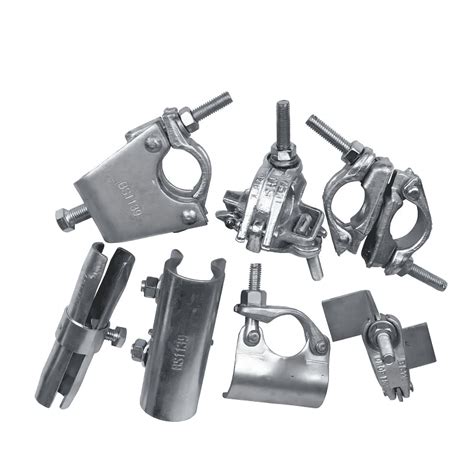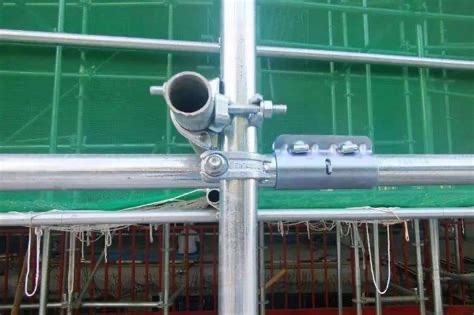Content Menu
● Understanding Tube and Clamp (Coupler) Scaffolding
● Types of Safety Couplers and Their Functions
● Tools and Materials Needed
● Step-by-Step Installation Guide
>> 1. Site Preparation and Planning
>> 2. Setting Up the Base
>> 3. Installing Vertical Standards
>> 4. Adding Horizontal Ledgers
>> 5. Installing Diagonal Braces
>> 6. Extending Scaffold Length
>> 7. Securing Scaffold Boards
>> 8. Installing Guardrails and Toeboards
>> 9. Final Safety Check
● Safety Checks and Best Practices
● Maintenance and Inspection
● Common Mistakes to Avoid
● Advanced Tips for Scaffold Assembly
● Environmental and Regulatory Considerations
● Conclusion
● FAQ
>> 1. What is a safety coupler in scaffolding?
>> 2. How do I know if my tube and clamp scaffold is safe to use?
>> 3. Can I use safety coupler scaffolding on uneven ground?
>> 4. What training do workers need for using safety coupler scaffolding?
>> 5. How often should safety coupler scaffolding be inspected?
Installing safety couplers on tube and clamp scaffolding is a cornerstone of safe construction practices. Proper installation ensures structural integrity, minimizes hazards, and supports heavy loads across diverse work environments. This comprehensive guide will walk you through every aspect of the process, from understanding the system and selecting the right components to step-by-step installation, safety checks, and maintenance.

Understanding Tube and Clamp (Coupler) Scaffolding
Tube and clamp scaffolding, also known as tube and coupler scaffolding, is a highly versatile system that uses steel or aluminum tubes connected by various types of couplers (clamps) to create a stable work platform. This method is favored for its adaptability to irregular shapes and its ability to support heavy loads, making it suitable for complex construction projects. The system consists of tubes typically with a diameter of 1.5-2 inches, which are connected by a variety of clamps and fittings. The clamps secure the tubes together at different angles, allowing the scaffold to be constructed in various shapes and sizes to suit different work requirements and site conditions.
Structurally, tube and clamp scaffold is easy to erect and dismantle. With just three basic components, this kind of scaffolding is adaptable to any situation whether high, low, inside, outside, round, straight, standard, or irregular shapes.
Types of Safety Couplers and Their Functions
Selecting the right safety coupler is essential for scaffold stability and worker safety. Here are the main types used in tube and clamp scaffolding:
Type of Coupler | Function | Application |
Right Angle Coupler | Connects tubes at 90° angles | Frames, ledgers, and standards |
Swivel Coupler | Connects tubes at any angle | Diagonal bracing |
Sleeve Coupler | Joins two tubes end-to-end | Extending tube length |
Board Retaining Coupler | Secures scaffold boards | Platform stability |
Base Plate Coupler | Provides a flat bearing surface at the scaffold base | Foundation stability |
A military clamp, which is 4" wide, is also available for bracing and is compatible with 1.90" OD tubing or pipe at any angle.
Tools and Materials Needed
Before beginning installation, gather the following:
- Steel scaffold tubes (vertical standards, horizontal ledgers, braces)
- Safety couplers (right angle, swivel, sleeve, board retaining, base plate)
- Base plates and adjustable base jacks
- Scaffold boards or planks
- Spirit level and measuring tape
- Spanner or scaffold wrench
- Personal protective equipment (PPE): helmet, gloves, safety boots, harness
Step-by-Step Installation Guide
1. Site Preparation and Planning
- Select a level, debris-free area for scaffold erection.
- Conduct a hazard assessment and ensure compliance with local safety regulations.
- Ensure all components are compatible and in good condition.
2. Setting Up the Base
- Place base plates or adjustable base jacks at planned intervals to distribute the scaffold load evenly.
- Use a spirit level to ensure each base plate is perfectly level.
BrandSafway "twist and lock" tubing, whether used as vertical or horizontal members, must be rotated into a locked position before being clamped.
3. Installing Vertical Standards
- Insert vertical tubes (standards) into the base plates.
- Use a level to check vertical alignment.
- Secure standards with right angle couplers at the base.
4. Adding Horizontal Ledgers
- Attach horizontal tubes (ledgers) between standards using right angle couplers.
- Ensure ledgers are level and tightly secured with a spanner.
5. Installing Diagonal Braces
- Use swivel couplers to connect diagonal braces between standards and ledgers.
- Diagonal bracing is critical for preventing lateral movement and increasing stability.
6. Extending Scaffold Length
- Use sleeve couplers to join tubes end-to-end when longer runs are needed.
- Ensure sleeve couplers are centered over the tube joint and fully tightened.
7. Securing Scaffold Boards
- Place scaffold boards or planks across the ledgers to form the work platform.
- Use board retaining couplers to prevent board movement.
8. Installing Guardrails and Toeboards
- Attach guardrails at required heights using right angle couplers for fall protection.
- Fix toeboards along platform edges to prevent tools or materials from falling.
9. Final Safety Check
- Inspect all coupler connections to ensure they are tight and secure.
- Confirm that the scaffold is plumb, level, and stable.
- Tag the scaffold as ready for use only after a competent person's inspection.
OSHA requires employers to conduct a hazard assessment to ensure worker safety before starting any scaffold project.

Safety Checks and Best Practices
- Always fasten couplers securely before proceeding to the next level.
- Install guys, ties, and braces as recommended by the manufacturer.
- Do not mix components from different manufacturers unless structural integrity is ensured.
- Never exceed the scaffold's rated load capacity.
- Inspect the scaffold before each use and after any incident.
- Use PPE at all times during erection and dismantling.
Tube & Clamp safety guidelines state that all clamps must be tightened firmly to approximately 45 ft.-lbs of torque as erection proceeds.
Maintenance and Inspection
- Conduct daily inspections for loose couplers, damaged tubes, or platform defects.
- Tag out and repair any scaffold found to be unsafe before use.
- Store couplers and tubes in dry, segregated containers to prevent corrosion.
Scaffold plank must be inspected to see that it is graded as scaffold plank, is sound and in good condition, and is free from saw cuts, cracks, and notches.
Common Mistakes to Avoid
- Failing to tighten couplers fully, leading to slippage and instability.
- Omitting diagonal bracing, which compromises structural integrity.
- Using makeshift methods (e.g., ladders, blocks) to increase platform height.
- Neglecting regular inspections, increasing the risk of unnoticed damage.
Advanced Tips for Scaffold Assembly
- Use temporary bracing during initial assembly to maintain alignment.
- For tall scaffolds (over 125 feet), have a qualified engineer design the system.
- Utilize spigot pins for connecting vertical standards securely at higher levels.
- Ensure all platforms above 2.4 m (8 ft) are fully decked and at least 460 mm (18 in) wide.
Environmental and Regulatory Considerations
- Avoid erecting scaffolds near energized power lines to prevent electrocution hazards.
- Ensure the ground is capable of supporting the scaffold load without settlement or displacement.
- Follow all local, state, and OSHA regulations for scaffold erection and use.
Conclusion
Installing safety couplers on tube and clamp scaffolding is a meticulous process that demands attention to detail, adherence to safety standards, and regular maintenance. By following the steps outlined above—selecting the right couplers, securing all connections, and conducting thorough inspections—you can ensure a safe and efficient work environment. Always prioritize safety, use proper PPE, and comply with regulatory guidelines to protect workers and the integrity of your safety coupler scaffolding system.

FAQ
1. What is a safety coupler in scaffolding?
A safety coupler is a specialized clamp used to securely connect scaffold tubes, ensuring the stability and structural integrity of the scaffold. Different types serve various functions, such as connecting tubes at right angles, joining tubes end-to-end, or securing boards in place.
2. How do I know if my tube and clamp scaffold is safe to use?
A scaffold is safe to use if all couplers are tightened, bracing is installed, the structure is plumb and level, and it has passed inspection by a competent person. Tagging systems (red for unsafe, green for safe) should be used at access points.
3. Can I use safety coupler scaffolding on uneven ground?
Yes, but you must use adjustable base jacks and ensure the base plates are level and stable. The ground must be compacted and capable of supporting the scaffold load.
4. What training do workers need for using safety coupler scaffolding?
Workers should receive comprehensive training on scaffold assembly, hazard recognition, load limits, fall protection, and emergency procedures. Only trained and authorized personnel should erect or modify scaffolding.
5. How often should safety coupler scaffolding be inspected?
Scaffolding should be inspected before each use, after any event that could affect its integrity (e.g., severe weather, impact), and at regular intervals throughout the project. Immediate repairs are required for any detected defects.






















